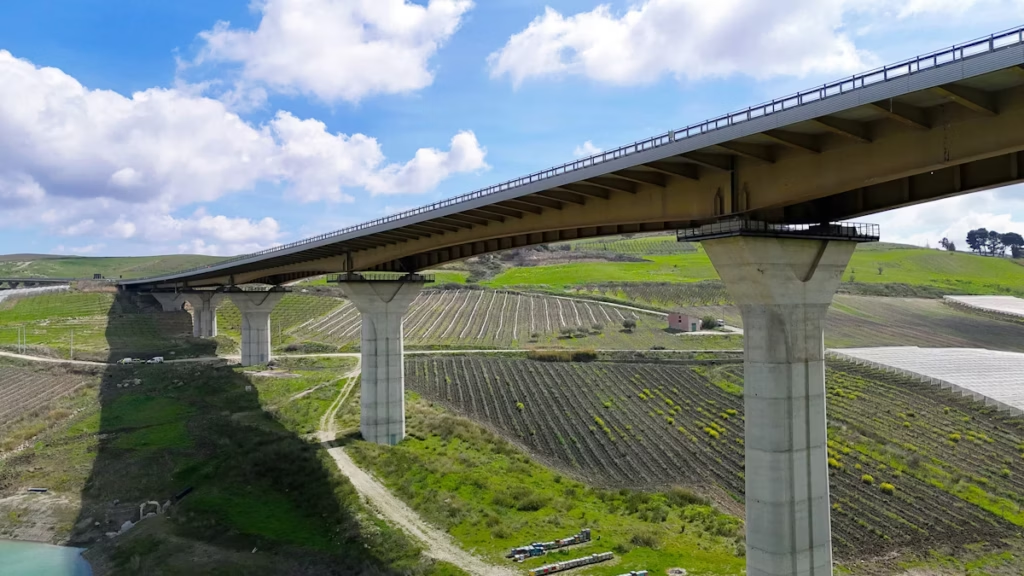Bridges, viaducts, and other large-scale infrastructure are more than just engineering marvels—they’re critical lifelines in transport networks. At Metromatics, we believe that ensuring their ongoing safety and performance isn’t an option—it’s essential. One of the most powerful tools available for this is Operational Modal Analysis (OMA). This method enables engineers to characterise how structures like viaducts behave under real-world conditions.

What is Operational Modal Analysis & Why It Matters
Operational Modal Analysis is a type of output-only modal testing that infers a structure’s dynamic properties—such as natural frequencies, damping, and mode shapes—from measurements of its response to ambient or operational loads (like traffic, wind, thermal variation), rather than applying controlled excitations. For long-span structures like highway viaducts, OMA offers a way to monitor behaviour without interrrupting service or apply artificial forcing.
Viaduct Structural Monitoring Case Study: Serra Cazzola Viaduct
A compelling example comes from the Serra Cazzola viaduct on state highway SS 640 in Sicily. The structure is a nearly 1 km-long continuous steel-concrete composite deck viaduct, with up to 70 m tall piers. For its dynamic characterisation, engineers installed 85 triaxial accelerometers (Dewesoft IOLITE 3xMEMS units). Temperature sensors, across 12 spans and at key supports were also installed. Modular architecture synchronously collected data across six branches. Data Acquisition Solutions
Because no theoretical dynamic model was available, experimental modal analysis via OMA was used. Even under challenging settings with significant span lengths, variable environmental conditions, and complex support geometry — engineers were able to extract the first several natural modes, all under 3 Hz. They determined that damping ratios were generally low (around 1%), though slightly higher in certain flexural and torsional modes. Data Acquisition Solutions
Key Takeaways for Viaduct Structural Monitoring
- Extensive Sensor Deployment: To capture meaningful mode shapes and behaviour, you need dense and well-placed accelerometers. In the Serra Cazzola example, sensors cover spans, piers, deck web, etc.
- Synchronization Matters: Hardware and software synchronization across all branches of measurement is critical. Local protocols (EtherCAT) combined with global time sync (e.g., NTP or GPS) ensure modal shapes reflect true structure behaviour. Data Acquisition Solutions
- Soft Dynamic Behaviour: Large viaducts often have low natural frequencies (below ~3 Hz). This means sensitivity to slow-changing loads (thermal, traffic) and the need for long-duration measurements.
- Modular Architecture for Flexibility: A system that can expand or adjust—adding more sensors or upgrading technology—ensures long-term viability and adaptability for future monitoring.
Conclusion
For owners and engineers of viaducts, bridges, and similar infrastructure, viaduct structural monitoring through OMA provides a path toward proactive, data-driven maintenance and safety assurance. The Serra Cazzola case demonstrates that even complex, high-span viaducts can be instrumented successfully, with clear results that can guide both short-term interventions and long-term health monitoring.
For more in-depth technical details, the original case study is available on the Dewesoft blog: “Dynamic Characterization and Structural Monitoring of a Highway Viaduct Using Operational Modal Analysis”.